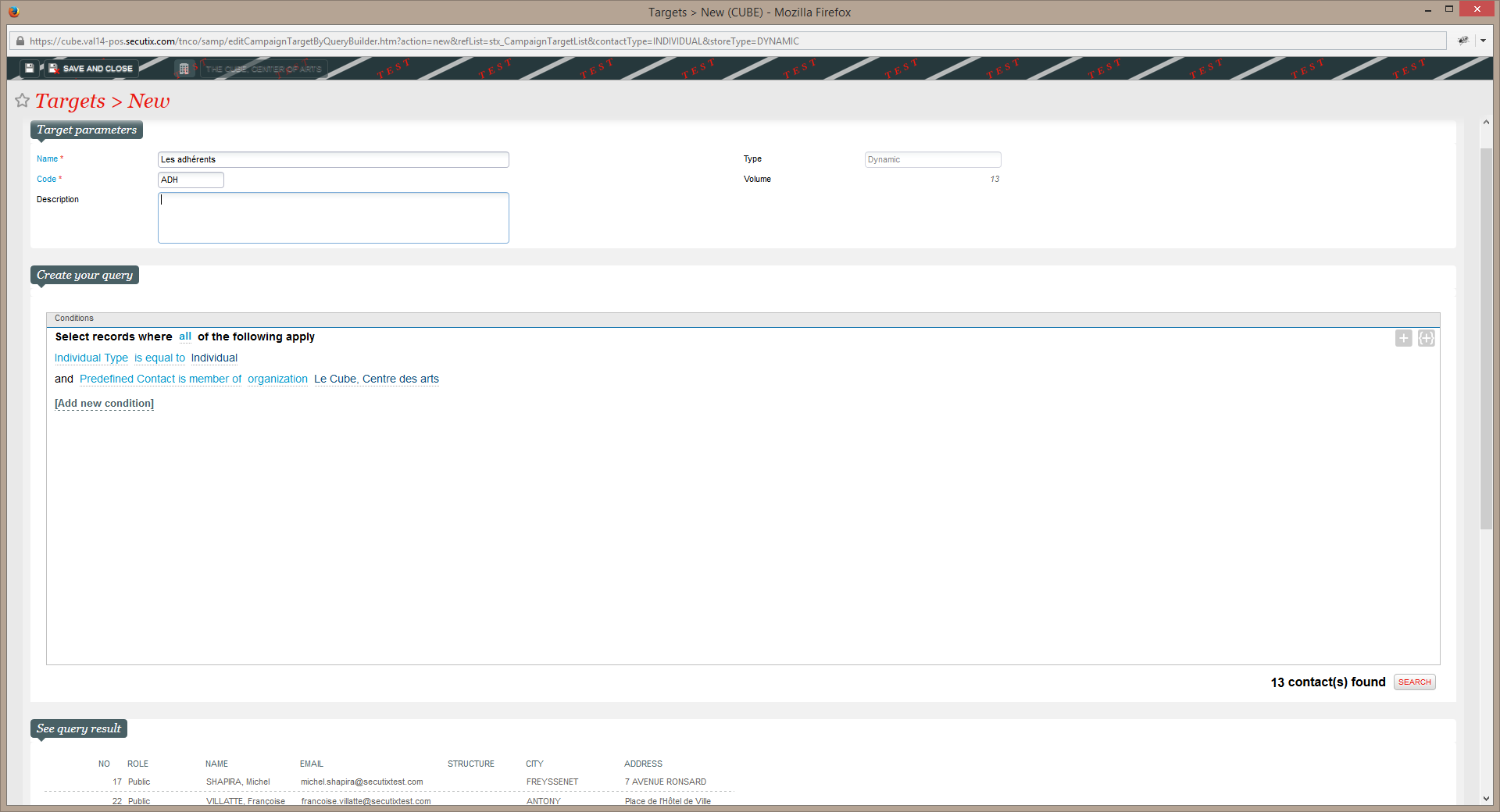Offer a relevant and responsive content to the segment you target!
The definition of your target is one of the most important parameter of your campaign. The customization of communication constitutes one of the key points to success.
Detailed guide
What is a target?
Before we get to the heart of the matter, let's look at some terminology.
A target is the combination of a query and of the result of that query (that is, a contact list). A target can be dynamic or static.
A dynamic target is a target that will evolve by itself over time depending on the criterion of the query you specified.
Let's imagine that you created a dynamic contact list after the purchase of a subscription. During sales opening, this list will probably be empty, but as your subscriptions are being sold, the list will be filled by itself and will include all your subscribers.
On the contrary, a static target constitutes a snapshot at a given point in time. The contact list found in the target will not vary.
Let's take back the example of our subscribers. In the case of a static list made during your sales opening, the latter will be empty even if your subscriptions are selling well. However, it is possible to manually update this static list simply by opening and executing the associated query.
Creation of a target
- In the context of an organization > "Audience Management" module, click on the "targets" menu.
- All the currently available targets will be displayed, and in a click; you can duplicate, duplicate as static or archive your targetClick on "New" to create a new target.Choose the "dynamic" type and use the "SECUTIX QUERY ENGINE".
- Click on "New" to create a new target.
- Choisissez le type "dynamique" et utilisez le "SECUTIX QUERY ENGINE".
- In this screen, you can define the criteria of your query by clicking on add a condition (To know more about the possibilities of the SECUTIX QUERY ENGINE)
- Click on Preview in order to see how many contacts meet your criteria and paste a sample.
- Click on "Save and close", you now have all the necessary elements for the creation of your marketing campaign.
The sample of the displayed contacts enables to easily open a contact form in order to verify that the criteria you defined really match your requirements from the Contacts database viewpoint.
Use of dynamic and static targets
Dynamic targets are especially useful for recurring marketing campaigns. A classic example is the day by day sending of automatic emails to persons having their birthday within the day. Or even the weekly sending of an email to subscribers having a subscription that will expire within the week.
Static targets can be used in the finer management of the target, with manual addition of contacts in the target or the import of existing contacts using a CSV file (a file listing contact numbers to be included in the target).
Marketing automation
One of the most interesting innovations of the SAM is power combined with a contact advantage and a recurring campaign. Let's take back the example of the above mentioned re-subscription campaign. If your recurring campaign is associated with a contact type advantage, contacts receiving the automatic email will also have automatic access to the associated contact advantage.
Types and modes of target creation:
A dynamic target can be defined through the 2 following modes:
- SECUTIX QUERY ENGINE (example described above)
- SQL query (this mode ensures "unlimited" targeting capabilities but requires a knowledge of SQL language and of the SecuTix data model)
A static target can be defined through the 4 following modes:
- SECUTIX QUERY ENGINE (example described above)
- SQL query (this mode ensures "unlimited" targeting capabilities but requires a knowledge of SQL language and of the SecuTix data model)
- Import of existing contacts using a CSV file (typically used by those who carry out contact targeting in an external tool (Business Object))
- Unique contact addition using SecuTix standard search
An immediate way to know if a target is associated with a campaign or not.
The screen lists targets and presents an interesting visual indicator:
- A blue target is a target that is associated to at least one campaign.
- A grey a target is an orphan target, it has no associated campaign.


